 Search by Keyword
|
“A DAY IN THE LIFE” Part Two
(John Lennon – Paul McCartney)
Song Structure and Style
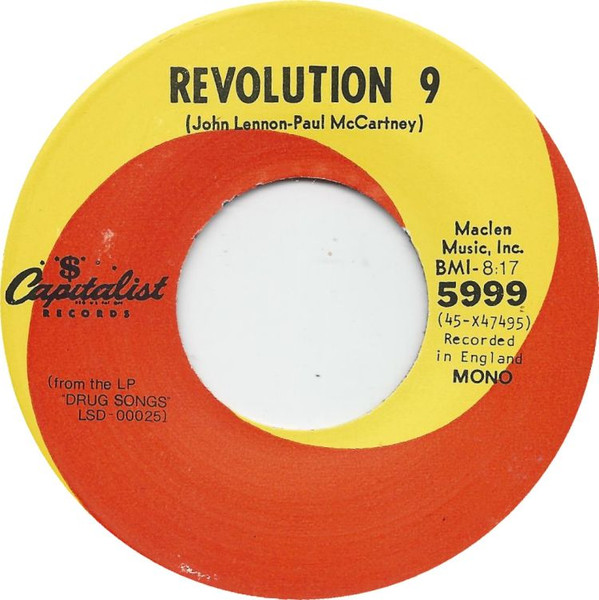 At this point in the game, The Beatles appeared less interested in conforming to established rules of songwriting and more interested in the unconventional avant-garde soundscapes of the time. But, in order to categorize “A Day In The Life” within the framework of an accepted structure, it comes out to be ‘verse/ verse/ verse/ bridge/ middle section/ middle bridge/ verse/ bridge’ (or aaabcdab) with a short intro and startling conclusion. And if you think this is avant-garde, it was very conventional in comparison to the following year's “Revolution 9.” At this point in the game, The Beatles appeared less interested in conforming to established rules of songwriting and more interested in the unconventional avant-garde soundscapes of the time. But, in order to categorize “A Day In The Life” within the framework of an accepted structure, it comes out to be ‘verse/ verse/ verse/ bridge/ middle section/ middle bridge/ verse/ bridge’ (or aaabcdab) with a short intro and startling conclusion. And if you think this is avant-garde, it was very conventional in comparison to the following year's “Revolution 9.”
We start out with a rather simple but effective eight-measure introduction, the first four of which contain only John’s acoustic guitar, the first two measures being masked by the ending applause of “Sgt. Pepper (Reprise).” In fact, because of this, it’s somewhat difficult to figure out where the downbeat is, not to mention that Paul’s piano comes in prominently on the two-beat of the fifth measure instead of the one-beat. Paul also brings in his overdubbed bass part at this point as well.
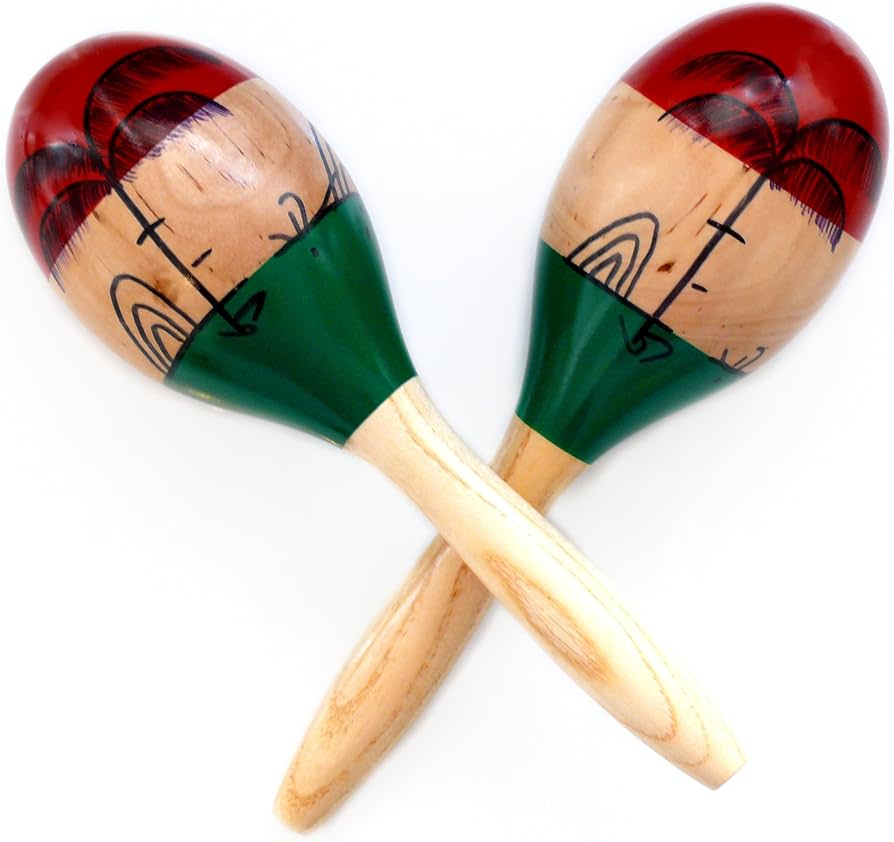 The first verse is twenty measures in length and, from the first measure, sees the inclusion of Ringo’s maracas, George’s conga drums and John’s amazing, highly-echoed, lead vocal. This goes automatically into the second verse, which is eighteen measures long and brings in Ringo’s drum fills in the third and fourth measures, then the seventh and eighth measures, before evolving into an actual 4/4 rock beat from the ninth measure on, still incorporating “lead drums” at strategic places in the verse. The final two measures of the second verse, just after the lyric “house of lords,” Paul pounds a little harder on the piano to differentiate the ending of the second verse and the beginning of the third verse that follows. The first verse is twenty measures in length and, from the first measure, sees the inclusion of Ringo’s maracas, George’s conga drums and John’s amazing, highly-echoed, lead vocal. This goes automatically into the second verse, which is eighteen measures long and brings in Ringo’s drum fills in the third and fourth measures, then the seventh and eighth measures, before evolving into an actual 4/4 rock beat from the ninth measure on, still incorporating “lead drums” at strategic places in the verse. The final two measures of the second verse, just after the lyric “house of lords,” Paul pounds a little harder on the piano to differentiate the ending of the second verse and the beginning of the third verse that follows.
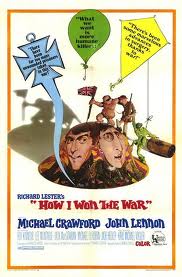 This third verse is nineteen measures long and continues the same instrumental backing, the eighth measure featuring John banging quite hard on his acoustic guitar for emphasis (as if to highlight his reference to his film “How I Won The War”). This verse is almost structurally identical to the second, the exception being a measure added to include the beginning of the double-tracked Lennon vocal line “I’d love to…” (His double-tracked vocals actually begin on the words “the book.”) This third verse is nineteen measures long and continues the same instrumental backing, the eighth measure featuring John banging quite hard on his acoustic guitar for emphasis (as if to highlight his reference to his film “How I Won The War”). This verse is almost structurally identical to the second, the exception being a measure added to include the beginning of the double-tracked Lennon vocal line “I’d love to…” (His double-tracked vocals actually begin on the words “the book.”)
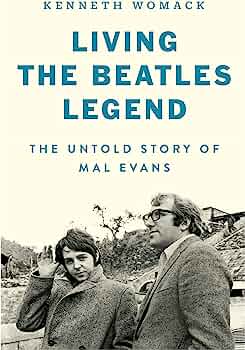 The first bridge then begins which, as counted off by Mal Evans, is twenty-four measures long. With the finishing of the phrase “turn you on,” the orchestra comes in echoing John’s oscillating vocals while his acoustic guitar disappears from the song for awhile. The ninth through twenty-fourth measures reveal the overdubbed orchestral crescendo ascending upward toward the high E chord. The first bridge then begins which, as counted off by Mal Evans, is twenty-four measures long. With the finishing of the phrase “turn you on,” the orchestra comes in echoing John’s oscillating vocals while his acoustic guitar disappears from the song for awhile. The ninth through twenty-fourth measures reveal the overdubbed orchestral crescendo ascending upward toward the high E chord.
The synchronization of the orchestral overdub tape isn’t quite perfect here, the musicians not reaching the high E chord until half way through the first measure of the ‘middle section,’ which begins immediately afterward. This section is twenty-three measures long, the first four measures acting as an introduction with piano and bass vamping from Paul on the E chord throughout. The first two measures have Ringo’s maracas in the background while his overdubbed hi-hat joins in for the second two measures. Towards the end of the second measure, Mal Evans sets off the alarm clock. If the listener has any trouble finding where the one-beat is at this point, he just needs to listen for Paul to indicate it to him with his vocalization of “one” at the beginning of the third measure. (This, of course, was done to cue himself in properly for his lead vocals that follow, but the listener can use it as well to get his footing in place.)
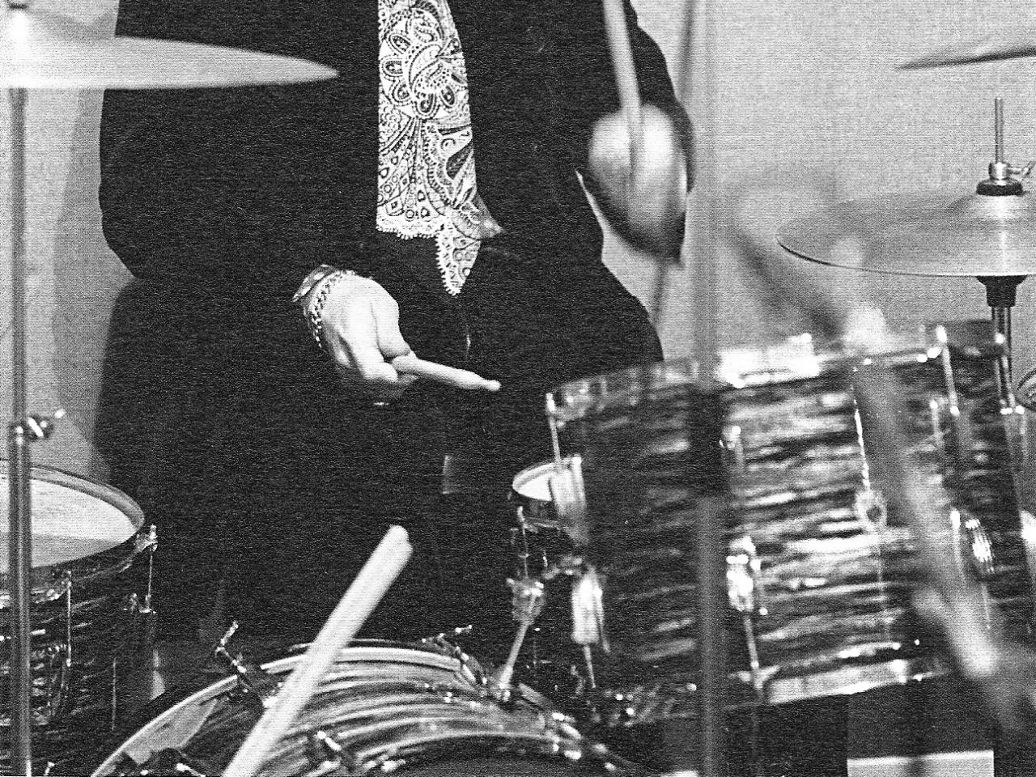 With a small drum fill from Ringo, we enter into the meat of the ‘middle section’ in the fifth measure when Paul’s vocals kick in (“woke up, fell out of bed”) and Ringo starts banging away at a steady snare drum beat. The same instrumentation continues throughout this section, with Paul’s adventurous bass lines and George’s conga drums flailing away in the background. A highlight, of course, is John’s heavy-breathing effect after the words “I noticed I was late” in the fourteenth measure. With a small drum fill from Ringo, we enter into the meat of the ‘middle section’ in the fifth measure when Paul’s vocals kick in (“woke up, fell out of bed”) and Ringo starts banging away at a steady snare drum beat. The same instrumentation continues throughout this section, with Paul’s adventurous bass lines and George’s conga drums flailing away in the background. A highlight, of course, is John’s heavy-breathing effect after the words “I noticed I was late” in the fourteenth measure.
The twenty-measure ‘middle bridge’ is next, which begins with John’s highly reverberated “aah” melodic lines set against the reemerging orchestral chords along with the continuing of the piano, bass, drums, maraca and conga drums instrumentation. This culminates in the highly pronounced orchestral chords of the nineteenth and twentieth measures, which act to get us back to the key of G for the final verse that follows.
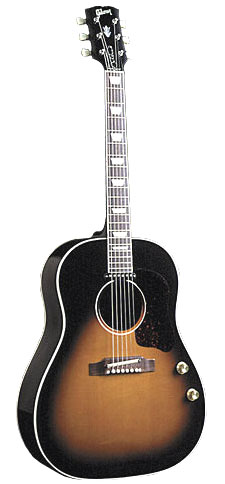 As the orchestra disappears again for the moment, the fourth verse begins which is also nineteen measures long. John’s vocals begin right in the first measure with the same instrumentation accompanying him, this time adding a slight bouncy feel to the rhythm although the tempo is, deceptively, virtually the same as the previous verses. Ringo is back in top form playing “lead drums” again with various energetic drum fills, while John’s Gibson acoustic guitar appears again, not having been heard since the beginning of the bridge. Double-tracking is evident again on John’s vocals beginning with the falsetto “Albert Hall” and continuing through “I’d love to turn you on.” As the orchestra disappears again for the moment, the fourth verse begins which is also nineteen measures long. John’s vocals begin right in the first measure with the same instrumentation accompanying him, this time adding a slight bouncy feel to the rhythm although the tempo is, deceptively, virtually the same as the previous verses. Ringo is back in top form playing “lead drums” again with various energetic drum fills, while John’s Gibson acoustic guitar appears again, not having been heard since the beginning of the bridge. Double-tracking is evident again on John’s vocals beginning with the falsetto “Albert Hall” and continuing through “I’d love to turn you on.”
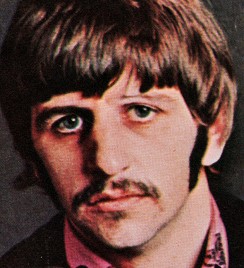 The second and final bridge then commences, this time with Mal Evans coming through even louder, especially on the word “four.” This twenty-four measure bridge shows Ringo still adventurous on his drum fills throughout (for as long as you can hear him, that is). The vacillating orchestra comes in on the downbeat here as they did on the first bridge, while the synchronization of the “orgasm” tape appears to have been more successful this time around. Then, of course, the final piano chord which comprises twenty players: four of Paul, four of John, four of Ringo, four of Mal Evans and four of George Martin (three on piano and one on harmonium). The second and final bridge then commences, this time with Mal Evans coming through even louder, especially on the word “four.” This twenty-four measure bridge shows Ringo still adventurous on his drum fills throughout (for as long as you can hear him, that is). The vacillating orchestra comes in on the downbeat here as they did on the first bridge, while the synchronization of the “orgasm” tape appears to have been more successful this time around. Then, of course, the final piano chord which comprises twenty players: four of Paul, four of John, four of Ringo, four of Mal Evans and four of George Martin (three on piano and one on harmonium).
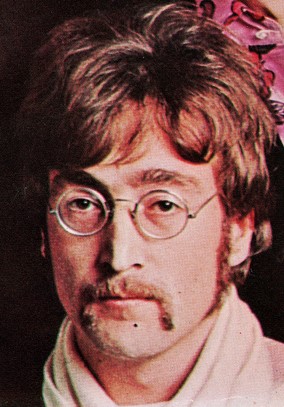 This monumental recording feat was a tour-de-force of musicianship all around. John’s heartfelt vocals and intuitive guitar work were accentuated perfectly by Paul’s complimentary piano work and well-thought out bass lines. His finely balanced lead vocals created a nice counter-point to John’s, while Ringo had simply never played better in his entire recording career. George Martin also needs to be wholeheartedly commended for his fortitude in bringing John and Paul’s vision to fruition, patiently working with session men who couldn’t conceive of what was being asked of them. And of course, everyone else who even played a bit part in making “A Day In The Life’ what it was (George Harrison included) undoubtedly contributed in spirit and enthusiasm to bring this to life. This monumental recording feat was a tour-de-force of musicianship all around. John’s heartfelt vocals and intuitive guitar work were accentuated perfectly by Paul’s complimentary piano work and well-thought out bass lines. His finely balanced lead vocals created a nice counter-point to John’s, while Ringo had simply never played better in his entire recording career. George Martin also needs to be wholeheartedly commended for his fortitude in bringing John and Paul’s vision to fruition, patiently working with session men who couldn’t conceive of what was being asked of them. And of course, everyone else who even played a bit part in making “A Day In The Life’ what it was (George Harrison included) undoubtedly contributed in spirit and enthusiasm to bring this to life.
American Releases
June 2nd, 1967, was the American release date for the album “Sgt. Pepper’s Lonely Hearts Club Band,” with its astonishing final track “A Day In The Life.” Since US copies did not include the dog whistle and “inner groove” as the British version did, the startling but solemn fading piano chord became the triumphant final word of the album in this and many other countries, which is suitably appropriate for such a landmark album. The album continued to be reissued in the US on vinyl throughout the years.
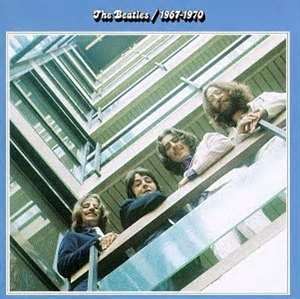 The song made enough commercial impact to be included in the official compilation album “The Beatles/1967-1970” (aka “The Blue Album”), which was first released on April 2nd, 1973. The stereo mix of the song was faded up with the crowd cheering of “Sgt. Pepper (Reprise)” clearly audible, which cut off the actual beginning of the song. This album very quickly achieved a #1 position on the Billboard album chart. The song made enough commercial impact to be included in the official compilation album “The Beatles/1967-1970” (aka “The Blue Album”), which was first released on April 2nd, 1973. The stereo mix of the song was faded up with the crowd cheering of “Sgt. Pepper (Reprise)” clearly audible, which cut off the actual beginning of the song. This album very quickly achieved a #1 position on the Billboard album chart.
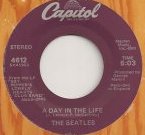 Many may not realize that “A Day In The Life” was actually released on a single, this being done in the US on August 14th, 1978 as the b-side of “Sgt. Pepper’s Lonely Hearts Club Band / With A Little Help From My Friends.” The single only peaked at #71 on the Billboard Hot 100, which didn’t come close to the success of “Got To Get You Into My Life” from 1976, which made it up to #7 on the Hot 100. Since this single was also released in the UK in September of 1978 (peaking at #63), it was included in the vinyl box set "The Beatles Singles Collection" that was released worldwide on December 6th, 1982. This single was dropped, however, when the box set was reissued in 1992 and 2019. Simultaneous to the release of the single (August 14th, 1978), Capitol released a picture disc of the "Sgt. Pepper" album as a limited-edition release, and then re-released it on December 15th, 2017 on 180 Gram vinyl using the new Giles Martin stereo mix. Many may not realize that “A Day In The Life” was actually released on a single, this being done in the US on August 14th, 1978 as the b-side of “Sgt. Pepper’s Lonely Hearts Club Band / With A Little Help From My Friends.” The single only peaked at #71 on the Billboard Hot 100, which didn’t come close to the success of “Got To Get You Into My Life” from 1976, which made it up to #7 on the Hot 100. Since this single was also released in the UK in September of 1978 (peaking at #63), it was included in the vinyl box set "The Beatles Singles Collection" that was released worldwide on December 6th, 1982. This single was dropped, however, when the box set was reissued in 1992 and 2019. Simultaneous to the release of the single (August 14th, 1978), Capitol released a picture disc of the "Sgt. Pepper" album as a limited-edition release, and then re-released it on December 15th, 2017 on 180 Gram vinyl using the new Giles Martin stereo mix.
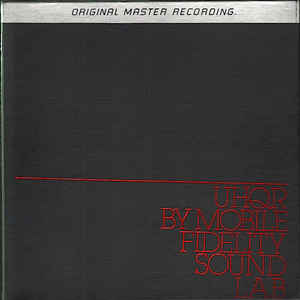 Two interesting US vinyl reissues of the “Sgt. Pepper” album were released as "Original Master Recording" editions produced through Mobile Fidelity Sound Lab. The first edition released in September of 1982 (with matrix # UHQR "Ultra High Quality Recording" 1-100) listed for $40 per copy, more than five times the cost of the standard version, and was limited to 5000 sequentially numbered copies that weighed 200 grams (double the weight of conventional vinyl at that time) and were packaged between layers of protective foam rubber in a thick box. The second edition from Mobile Fidelity Sound Lab was released in June of 1983 similar to the rest of the Beatles catalog released within their series. Both of these were prepared utilizing half-speed mastering technology from the original master tape on loan from EMI. These versions of “Sgt. Pepper” were only available for a short time and are quite collectible today. Two interesting US vinyl reissues of the “Sgt. Pepper” album were released as "Original Master Recording" editions produced through Mobile Fidelity Sound Lab. The first edition released in September of 1982 (with matrix # UHQR "Ultra High Quality Recording" 1-100) listed for $40 per copy, more than five times the cost of the standard version, and was limited to 5000 sequentially numbered copies that weighed 200 grams (double the weight of conventional vinyl at that time) and were packaged between layers of protective foam rubber in a thick box. The second edition from Mobile Fidelity Sound Lab was released in June of 1983 similar to the rest of the Beatles catalog released within their series. Both of these were prepared utilizing half-speed mastering technology from the original master tape on loan from EMI. These versions of “Sgt. Pepper” were only available for a short time and are quite collectible today.
The “Sgt. Pepper” album was first released on compact disc on September 21st, 1987, this time including the dog whistle and “inner groove” as the British version always had. The album was then remastered and re-released on September 9th, 2009.
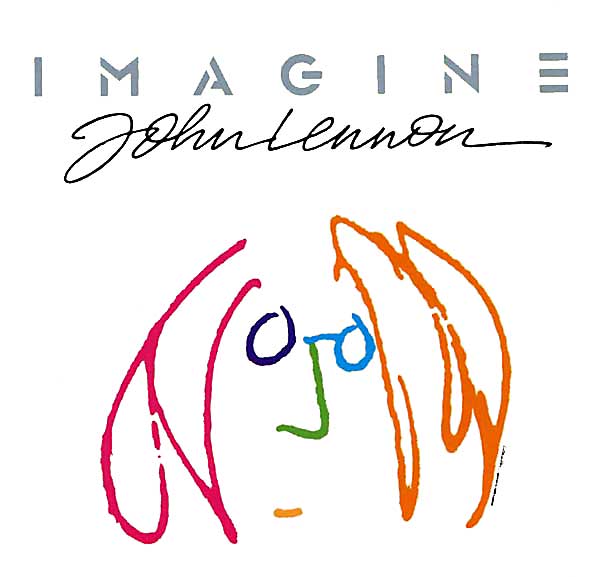 On October 10th, 1988, the song was released as a feature of the album “Imagine: John Lennon,” which was the soundtrack of the documentary film of the same name. Peaking respectably at #31 on the Billboard album chart, the version of “A Day In The Life” included therein appeared for the first time from the February 23rd, 1967 stereo mix before the cross-fade with “Sgt. Pepper (Reprise)” was done, thereby eliminating the crowd cheering from the previous track. Therefore, for the first time, we could clearly hear John’s acoustic guitar introduction from the original "take four." On October 10th, 1988, the song was released as a feature of the album “Imagine: John Lennon,” which was the soundtrack of the documentary film of the same name. Peaking respectably at #31 on the Billboard album chart, the version of “A Day In The Life” included therein appeared for the first time from the February 23rd, 1967 stereo mix before the cross-fade with “Sgt. Pepper (Reprise)” was done, thereby eliminating the crowd cheering from the previous track. Therefore, for the first time, we could clearly hear John’s acoustic guitar introduction from the original "take four."
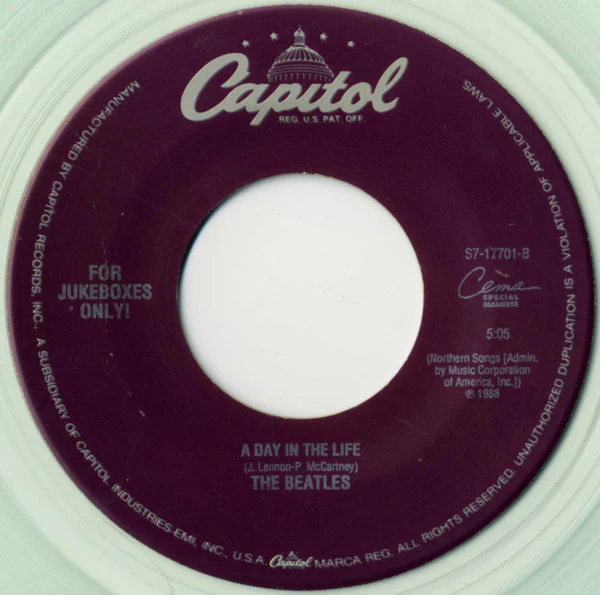 On September 20th, 1993, the “1967-1970” album was released on compact disc for the first time, “A Day In The Life” including the uncut stereo mix as used on the above “Imagine” soundtrack. The remastered versions of all of these songs were then included on a “remastered” version of this release on August 10th, 2010. On September 20th, 1993, the “1967-1970” album was released on compact disc for the first time, “A Day In The Life” including the uncut stereo mix as used on the above “Imagine” soundtrack. The remastered versions of all of these songs were then included on a “remastered” version of this release on August 10th, 2010.
In January of 1994, Capitol re-issued the above mentioned 1978 single as a limited edition “For Jukeboxes Only” release on clear vinyl, "A Day In The Life" again using the uncut stereo mix as used on the above mentioned "Imagine" Soundtrack. This Cema series single is quite the collector’s item today.
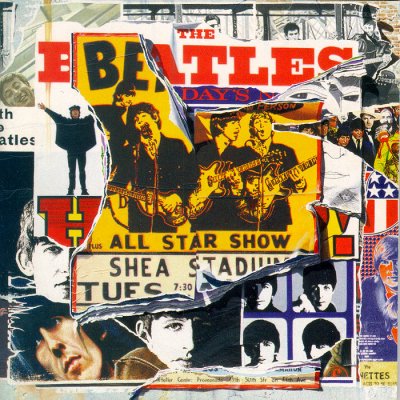 The compilation album “Anthology 2” was released on March 18th, 1996 and featured a newly mixed makeshift version that juxtaposes different takes of the song to create a "work in progress" feel, creating an interesting listen for the true Beatles fan. The details of what takes were used are detailed in the “Recording History” section of this article. The album topped the Billboard chart just after its release. The compilation album “Anthology 2” was released on March 18th, 1996 and featured a newly mixed makeshift version that juxtaposes different takes of the song to create a "work in progress" feel, creating an interesting listen for the true Beatles fan. The details of what takes were used are detailed in the “Recording History” section of this article. The album topped the Billboard chart just after its release.
On October 28th, 1996, “Anthology 3” was released, which featured the final piano chord of “A Day In The Life” backwards and then frontwards as a fitting conclusion to the entire Anthology project.
 On November 20th, 2006, the newly mixed and mastered “Love” album was released which features the above mentioned amazing new stereo mix of “A Day In The Life.” Also included are the orchestra swells from the song as heard on the track “Get Back.” On November 20th, 2006, the newly mixed and mastered “Love” album was released which features the above mentioned amazing new stereo mix of “A Day In The Life.” Also included are the orchestra swells from the song as heard on the track “Get Back.”
Not to be forgotten is the September 9th, 2009 released CD box set “The Beatles In Mono,” which featured the rare version of “A Day In The Life” as originally conceived in the mono format of 1967. The vinyl edition of this box set came out on September 9th, 2014.
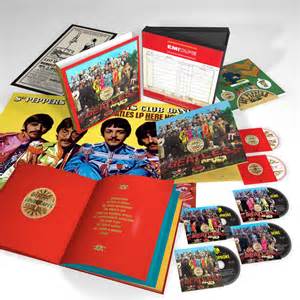 On May 26th, 2017, various editions of the 50th Anniversary of the "Sgt. Pepper" album were released, primarily featuring a newly mixed stereo version of the album as prepared by producer Giles Martin and engineer Sam Okell, patterned after what has been considered to be the superior 1967 mono mix. The excellent 2015 stereo mix is included here, as created for the "Beatles 1+" DVD and Blu-Ray releases. The "2 CD Anniversary Edition" release also contains the original "take one" and the final "hummed last chord," while the "Super Deluxe Edition" box set additionally contains "take two," the "orchestral overdub," takes 8 through 11 of the "hummed last chord" as well as the orchestral "last chord." The Beatles enthusiasts' dream! On May 26th, 2017, various editions of the 50th Anniversary of the "Sgt. Pepper" album were released, primarily featuring a newly mixed stereo version of the album as prepared by producer Giles Martin and engineer Sam Okell, patterned after what has been considered to be the superior 1967 mono mix. The excellent 2015 stereo mix is included here, as created for the "Beatles 1+" DVD and Blu-Ray releases. The "2 CD Anniversary Edition" release also contains the original "take one" and the final "hummed last chord," while the "Super Deluxe Edition" box set additionally contains "take two," the "orchestral overdub," takes 8 through 11 of the "hummed last chord" as well as the orchestral "last chord." The Beatles enthusiasts' dream!
Paul’s live version of the song, as performed at Citi Field in New York City in 2009, is included on his double live album “Good Evening New York City,” which was packaged with a DVD that also included this incredible performance. This album, which was released on November 17th, 2009, peaked at #16 on the Billboard album chart.
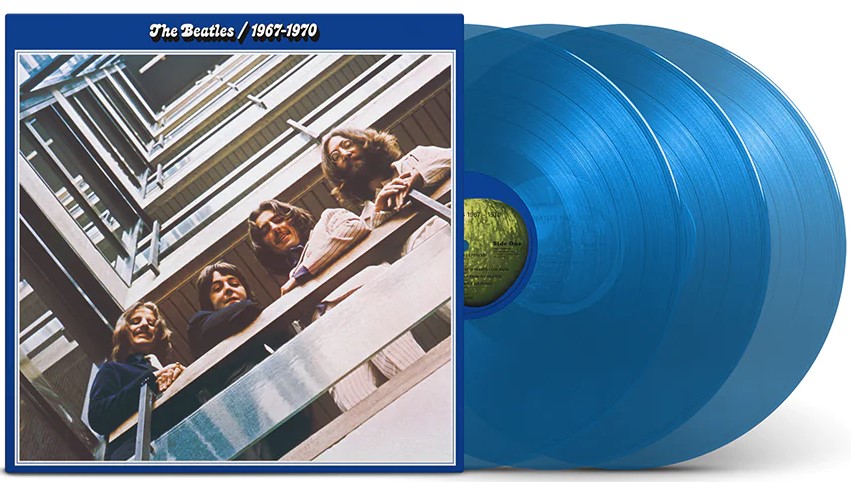 A 50th Anniversay edition of the compilation album "The Beatles / 1967 - 1970" (aka "The Blue Album") was released on November 10th, 2023, the Giles Martin stereo mix of "A Day In The Life" as detailed above, being included. This expanded release included 12 additional songs for a total of 38 tracks, and was made available as a double CD and as a triple vinyl release on both black and blue vinyl. A 50th Anniversay edition of the compilation album "The Beatles / 1967 - 1970" (aka "The Blue Album") was released on November 10th, 2023, the Giles Martin stereo mix of "A Day In The Life" as detailed above, being included. This expanded release included 12 additional songs for a total of 38 tracks, and was made available as a double CD and as a triple vinyl release on both black and blue vinyl.
Live Performances
Even if The Beatles were still doing live performances at this time, “A Day In The Life’ would not have been a consideration due to its extensive use of orchestra. The advent of simulating strings and horns with the use of synthesizers was yet a decade away.
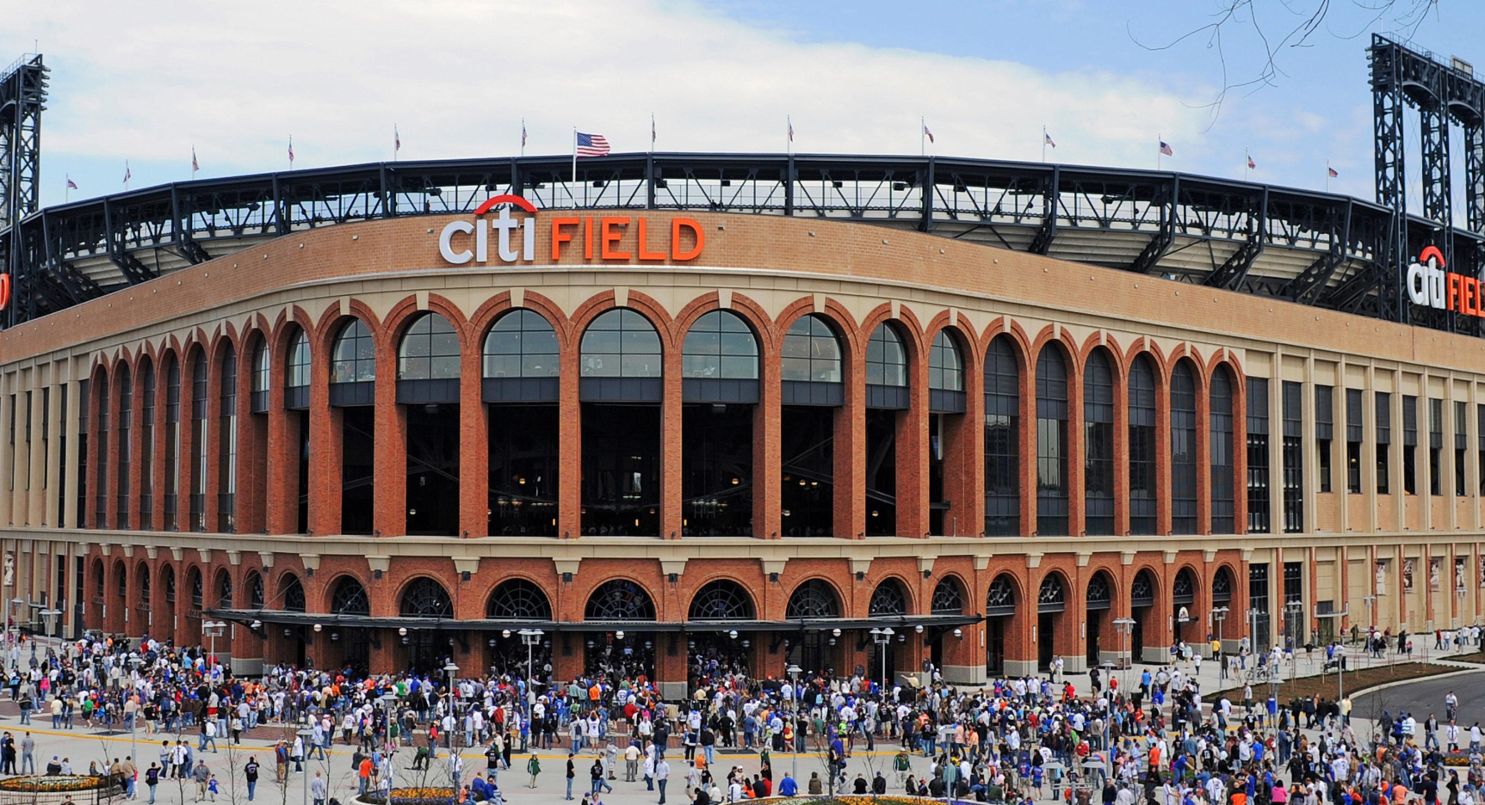 Starting with his “Summer Live ’09” tour, which ran from July 11th to August 19th of that year, Paul decided, with the use of synthesizers, to pay tribute to John Lennon and do his rendition of “A Day In The Life,” playing it as a medley with “Give Peace A Chance,” with Lennon’s peace anthem coming in just before the final verse of “A Day In The Life.” It went over so well with audiences, such as at Citi Field in New York City between July 17th and 21st of that year, that he continued to perform the song for future tours as well. Starting with his “Summer Live ’09” tour, which ran from July 11th to August 19th of that year, Paul decided, with the use of synthesizers, to pay tribute to John Lennon and do his rendition of “A Day In The Life,” playing it as a medley with “Give Peace A Chance,” with Lennon’s peace anthem coming in just before the final verse of “A Day In The Life.” It went over so well with audiences, such as at Citi Field in New York City between July 17th and 21st of that year, that he continued to perform the song for future tours as well.
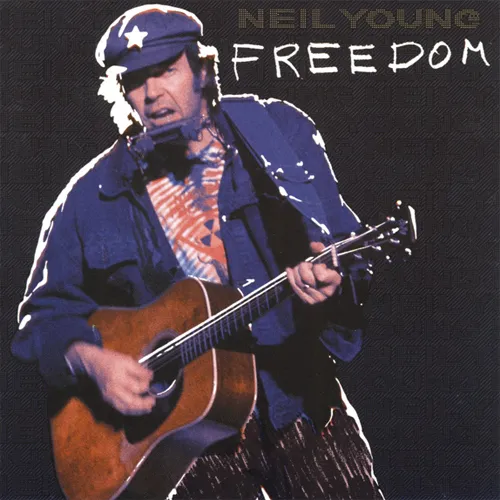 The following tours also featured the song: “Good Evening Europe Tour” (December 2nd through 22nd, 2009), “Up And Coming Tour” (March 28th, 2010 through June 10th, 2011), his “On The Run Tour” (July 15th, 2011 through November 29th, 2012) and his "One On One" tour (the medley being performed with Neil Young during the Desert Trip shows on October 8th and 9th, 2016 and thereafter from September 15th to December 16th, 2017). The following tours also featured the song: “Good Evening Europe Tour” (December 2nd through 22nd, 2009), “Up And Coming Tour” (March 28th, 2010 through June 10th, 2011), his “On The Run Tour” (July 15th, 2011 through November 29th, 2012) and his "One On One" tour (the medley being performed with Neil Young during the Desert Trip shows on October 8th and 9th, 2016 and thereafter from September 15th to December 16th, 2017).
Not to be forgotten is Paul's demonstration of the final piano chord of the song on his 2021 Hulu documentary series "McCartney 3,2,1."
Conclusion
A song with such extreme differences to anything The Beatles (or anyone else for that matter) had ever released before was due to make an impact, whether with criticism or praise. Upon first release, it received both.
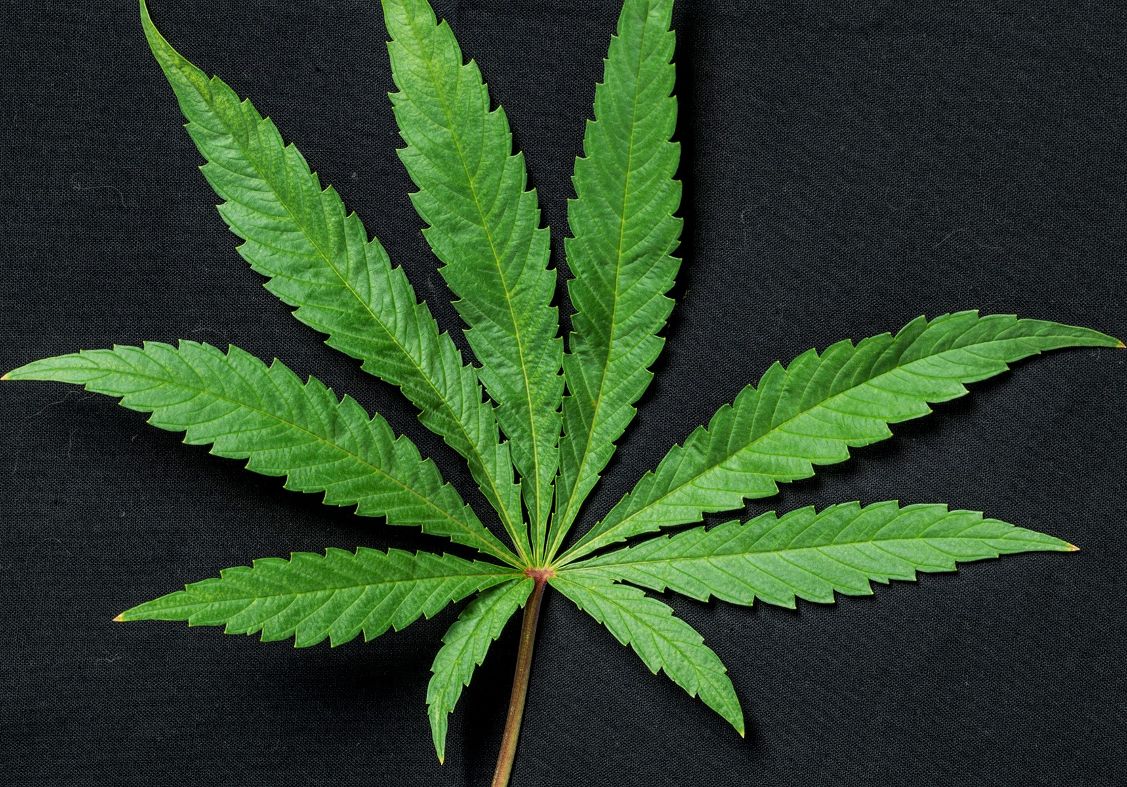 The phrase “I’d love to turn you on” definitely caught the attention of the BBC, who were quick to ban the song for encouraging drug use. Another lyric, “found my way upstairs and had a smoke…and I went into a dream,” was viewed with equal suspicion, not to mention the “orgasm of sound” heard twice in the recording which was said to simulate a drug rush. “We have listened to this song over and over again,” a spokesman for the BBC stated, “and we have decided that it appears to go just a little too far, and could encourage a permissive attitude to drug-taking.” The phrase “I’d love to turn you on” definitely caught the attention of the BBC, who were quick to ban the song for encouraging drug use. Another lyric, “found my way upstairs and had a smoke…and I went into a dream,” was viewed with equal suspicion, not to mention the “orgasm of sound” heard twice in the recording which was said to simulate a drug rush. “We have listened to this song over and over again,” a spokesman for the BBC stated, “and we have decided that it appears to go just a little too far, and could encourage a permissive attitude to drug-taking.”
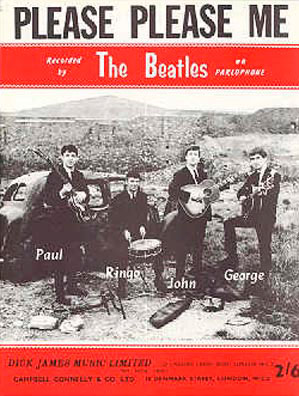 “Banning doesn’t help,” Paul stated at the May 19th, 1967 dinner party to launch the “Sgt. Pepper” album at Brian Epstein’s London home. “It just draws attention to a subject when, all the time, their aim is to force attention away from it. Banning never did any good…If they wanted to, they would have found plenty of double meanings in our early stuff. How about, ‘I’ll Keep You Satisfied’ or ‘Please Please Me’? Everything has a double meaning if you look for it long enough…Still, I don’t care if they ban it, because there are plenty of other tracks they’ll play.” “Banning doesn’t help,” Paul stated at the May 19th, 1967 dinner party to launch the “Sgt. Pepper” album at Brian Epstein’s London home. “It just draws attention to a subject when, all the time, their aim is to force attention away from it. Banning never did any good…If they wanted to, they would have found plenty of double meanings in our early stuff. How about, ‘I’ll Keep You Satisfied’ or ‘Please Please Me’? Everything has a double meaning if you look for it long enough…Still, I don’t care if they ban it, because there are plenty of other tracks they’ll play.”
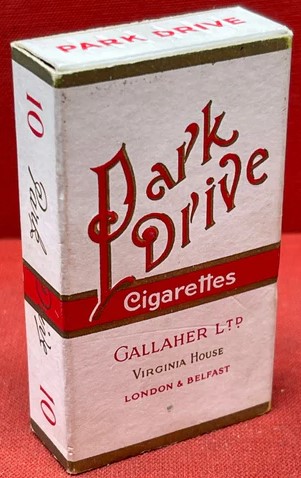 John also chimed in about this at the "Sgt Pepper" launch party in 1967. "I'd like to meet the man who banned this song of ours. I'd like to turn him on to what's happening. Why don't they charge the Electricity Board with spreading drugs because to get electricity you have to 'switch on'? Hidden meanings, man. Everyhing depends on the way you read a thing. If they want to read drugs into our stuff, they will. But it's THEM that's reading it. THEM!" Paul adds, "We were just trying to reflect a day in anybody's like, and John read a newspaper story about somebody digging up a road in Blackburn, Lancashine. It was like images in a dream - that was what we were after. Going upstairs on a bus and havingt a smoke. Does THAT have to be about drugs? Well, the BBC thinks it might be. As a matter of fact, we meant (British cigarette brand) 'Park Drive.'" John also chimed in about this at the "Sgt Pepper" launch party in 1967. "I'd like to meet the man who banned this song of ours. I'd like to turn him on to what's happening. Why don't they charge the Electricity Board with spreading drugs because to get electricity you have to 'switch on'? Hidden meanings, man. Everyhing depends on the way you read a thing. If they want to read drugs into our stuff, they will. But it's THEM that's reading it. THEM!" Paul adds, "We were just trying to reflect a day in anybody's like, and John read a newspaper story about somebody digging up a road in Blackburn, Lancashine. It was like images in a dream - that was what we were after. Going upstairs on a bus and havingt a smoke. Does THAT have to be about drugs? Well, the BBC thinks it might be. As a matter of fact, we meant (British cigarette brand) 'Park Drive.'"
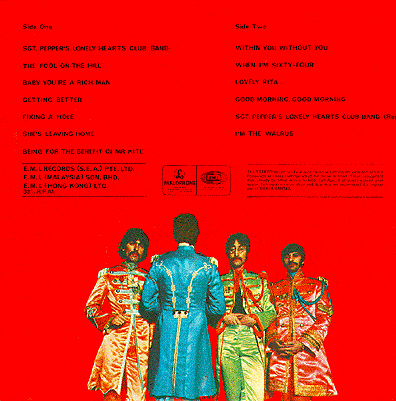 Other tracks did get attention given to them by the BBC as well, “With A Little Help From My Friends” and “Lucy In The Sky With Diamonds” being earmarked as encouraging drug use. Because of this, these tracks, including “A Day In The Life,” went as far as being excluded from the released album in South Asia, Hong Kong and Malaysia, replacing these songs with "The Fool On The Hill," "Baby, You're A Rich Man" and "I Am The Walrus." Other tracks did get attention given to them by the BBC as well, “With A Little Help From My Friends” and “Lucy In The Sky With Diamonds” being earmarked as encouraging drug use. Because of this, these tracks, including “A Day In The Life,” went as far as being excluded from the released album in South Asia, Hong Kong and Malaysia, replacing these songs with "The Fool On The Hill," "Baby, You're A Rich Man" and "I Am The Walrus."
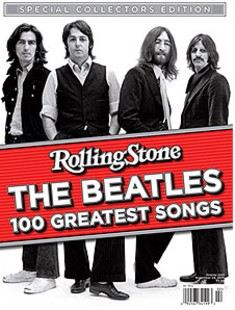 On the other hand, praise for the song has done nothing but flourish as time has progressed. “The best ever collaborative effort between Lennon and McCartney” (John Robertson), “(The song) redefines everything that came before” (Tim Riley), “The sound of The Beatles on a historic roll” (Jann S. Wenner) are among the countless accolades given to “A Day In The Life” by writers and critics around the world. Being named both the 28th greatest song of all time and the #1 Beatles song of all time by Rolling Stone Magazine says it all. On the other hand, praise for the song has done nothing but flourish as time has progressed. “The best ever collaborative effort between Lennon and McCartney” (John Robertson), “(The song) redefines everything that came before” (Tim Riley), “The sound of The Beatles on a historic roll” (Jann S. Wenner) are among the countless accolades given to “A Day In The Life” by writers and critics around the world. Being named both the 28th greatest song of all time and the #1 Beatles song of all time by Rolling Stone Magazine says it all.
 ‘Pushing the envelope’ as they knew they were, everyone in The Beatles camp had their misgivings about the song's release. Paul was captured on tape during the orchestral overdub (as heard on “Anthology 2”) explaining to someone, “The worst thing about doing this, that we’re doing something like this, is they’ll think of it. At first people said a bit suspicious…you know, ‘Come on, what are you up to?’” George Martin also had concern, thinking they “were being a bit pretentious, a bit clever-clever.” ‘Pushing the envelope’ as they knew they were, everyone in The Beatles camp had their misgivings about the song's release. Paul was captured on tape during the orchestral overdub (as heard on “Anthology 2”) explaining to someone, “The worst thing about doing this, that we’re doing something like this, is they’ll think of it. At first people said a bit suspicious…you know, ‘Come on, what are you up to?’” George Martin also had concern, thinking they “were being a bit pretentious, a bit clever-clever.”
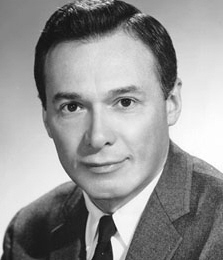 This apprehension was put to rest when George Martin played the song to Capitol Records president Alan Livingston. “I played him ‘A Day In The Life,” George Martin explains. “It knocked him sideways. He was completely flabbergasted by it. He was in no way perturbed by any aspect of the song, by its relatively bizarre lyrics or its avant-garde production – only speechless with admiration. I knew then we were home and dry. I suppose I had been worried that we might be leaving our public behind, getting a bit too fast in front. If Alan Livingston liked it, though…” This apprehension was put to rest when George Martin played the song to Capitol Records president Alan Livingston. “I played him ‘A Day In The Life,” George Martin explains. “It knocked him sideways. He was completely flabbergasted by it. He was in no way perturbed by any aspect of the song, by its relatively bizarre lyrics or its avant-garde production – only speechless with admiration. I knew then we were home and dry. I suppose I had been worried that we might be leaving our public behind, getting a bit too fast in front. If Alan Livingston liked it, though…”
And the rest is history!
Song Summary
"A Day In The Life”
Written by: John Lennon / Paul McCartney
-
Song Written: January 17 to 19, 1967
-
Song Recorded: January 19 & 20, February 3, 10 & 22, 1967
-
First US Release Date: June 2, 1967
-
-
US Single Release: Capitol #4612
-
Highest Chart Position: n/a
-
-
Length: 5:03
-
Key: G major
-
Producer: George Martin
-
Engineers: Geoff Emerick, Phil McDonald, Richard Lush
Instrumentation (most likely):
-
John Lennon - Lead Vocals, Rhythm Guitar (1964 Gibson J-160E), Piano (Challen blond-wood spinet), heavy breathing
-
Paul McCartney - Lead Vocals, Piano (1905 Steinway Vertegrand), Bass Guitar (1964 Rickenbacker 4001 S)
-
Ringo Starr - Drums (1964 Ludwig Super Classic Black Oyster Pearl), Piano (1905 Steinway Vertegrand), Maracas
-
George Harrison - Conga Drums
-
George Martin - Piano (Hamburg Steinway Baby Grand), Harmonium (Mannborg)
-
Mal Evans - Piano (Steinway grand), Vocals (counting), Alarm Clock
-
Marijke Koger - Tambourine
-
Erich Gruenberg - Violin
-
Granville Jones - Violin
-
Bill Monro - Violin
-
Jergen Hess - Violin
-
Hans Geiger - Violin
-
D. Bradley - Violin
-
Lionel Bentley - Violin
-
David McCallum - Violin
-
Donald Weekes - Violin
-
Henry Datyner - Violin
-
Sidney Sax - Violin
-
Ernest Scott - Violin
-
John Underwood - Viola
-
Gwynne Edwards - Viola
-
Bernard Davis - Viola
-
John Meek - Viola
-
Francisco Gabarro - Cello
-
Dennis Vigay - Cello
-
Alan Dalziel - Cello
-
Alex Nifosi - Cello
-
Cyril MacArther - Double-bass
-
Gordon Pearce - Double-bass
-
John Marson - Harp
-
Roger Lord - Oboe
-
Clifford Seville - Flute
-
David Sandeman - Flute
-
David Mason - Trumpet
-
Monty Montgomery - Trumpet
-
Harold Jackson - Trumpet
-
Raymond Brown - Trombone
-
Raymond Premru - Trombone
-
T. Moore - Trombone
-
Michael Barnes - Tuba
-
Basil Tschaikov - Clarinet
-
Jack Brymer - Clarinet
-
N. Fawcett - Bassoon
-
Alfred Waters - Bassoon
-
Alan Civil - Horn
-
Neil Sanders - Horn
-
Tristan Fry - Percussion, including Timpani
Written and compiled by Dave Rybaczewski
|
IF YOU WOULD LIKE TO MAKE A DONATION TO KEEP THIS WEBSITE UP AND RUNNING, PLEASE CLICK BELOW!
Sign Up Below for our MONTHLY BEATLES TRIVIA QUIZ!
|